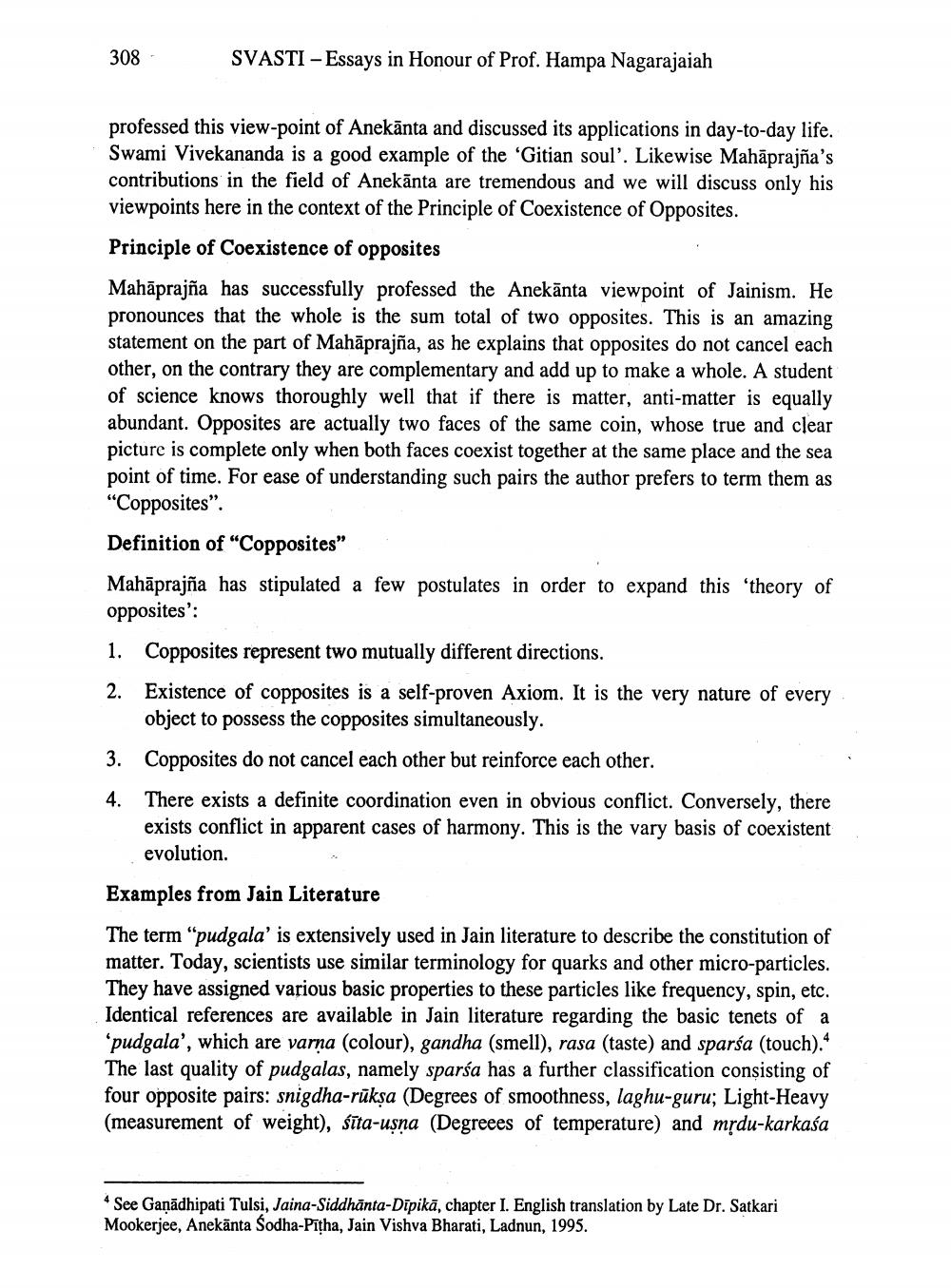________________
308
SVASTI - Essays in Honour of Prof. Hampa Nagarajaiah
professed this view-point of Anekānta and discussed its applications in day-to-day life. Swami Vivekananda is a good example of the 'Gitian soul'. Likewise Mahāprajña's contributions in the field of Anekānta are tremendous and we will discuss only his viewpoints here in the context of the Principle of Coexistence of Opposites.
Principle of Coexistence of opposites
Mahāprajña has successfully professed the Anekānta viewpoint of Jainism. He pronounces that the whole is the sum total of two opposites. This is an amazing statement on the part of Mahāprajña, as he explains that opposites do not cancel each other, on the contrary they are complementary and add up to make a whole. A student of science knows thoroughly well that if there is matter, anti-matter is equally abundant. Opposites are actually two faces of the same coin, whose true and clear picture is complete only when both faces coexist together at the same place and the sea point of time. For ease of understanding such pairs the author prefers to term them as "Copposites".
Definition of "Copposites"
.
Mahāprajña has stipulated a few postulates in order to expand this 'theory of opposites':
1.
Copposites represent two mutually different directions.
2.
F
Existence of copposites is a self-proven Axiom. It is the very nature of every
object to possess the copposites simultaneously. 3. Copposites do not cancel each other but reinforce each other.
There exists a definite coordination even in obvious conflict. Conversely, there exists conflict in apparent cases of harmony. This is the vary basis of coexistent evolution.
Examples from Jain Literature
The term "pudgala' is extensively used in Jain literature to describe the constitution of matter. Today, scientists use similar terminology for quarks and other micro-particles. They have assigned various basic properties to these particles like frequency, spin, etc. Identical references are available in Jain literature regarding the basic tenets of a 'pudgala', which are varna (colour), gandha (smell), rasa (taste) and sparsa (touch).* The last quality of pudgalas, namely sparśa has a further classification consisting of four opposite pairs: snigdha-rūkņa (Degrees of smoothness, laghu-guru; Light-Heavy (measurement of weight), śīta-usna (Degreees of temperature) and mrdu-karkasa
* See Gaņādhipati Tulsi, Jaina-Siddhānta-Dipikā, chapter I. English translation by Late Dr. Satkari Mookerjee, Anekānta Sodha-Pīțha, Jain Vishva Bharati, Ladnun, 1995.




